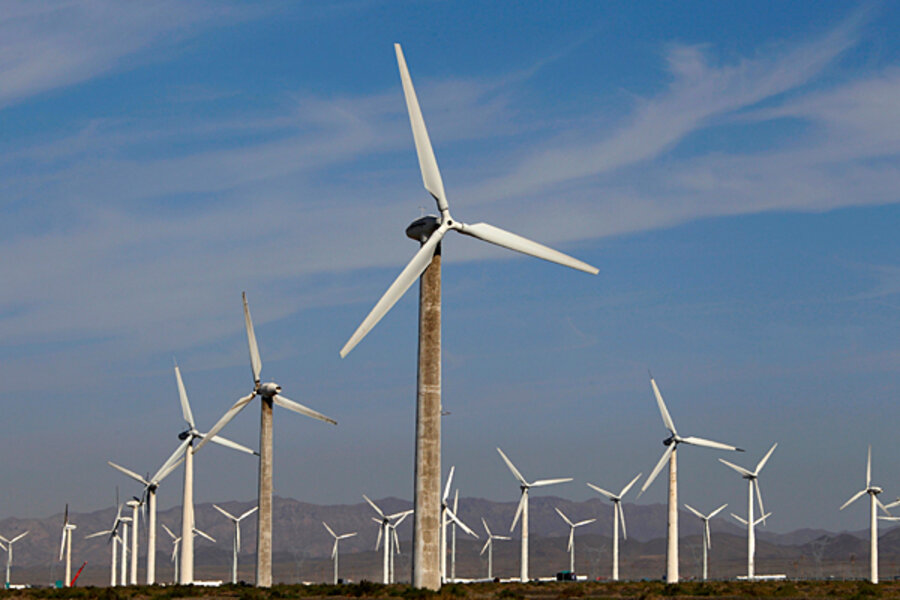Climate-change study: Today's power plants aren't the problem
Loading...
When it comes to greenhouse-gas emissions contributing to global warming, the big problem isn't the power plant on the outskirts of town. Rather, the big factor is the plants that will be built a decade or two from now.
"The sources of the most threatening emissions have yet to be built," according to a team of scientists trying to see what sort of warming will have been triggered by the end of the century by only today's greenhouse-gas emitters. The scientists' study appeared Thursday in the journal Science.
The researchers say their findings reinforce the notion that to meet skyrocketing demand for energy during this century, it will take "truly extraordinary development and deployment of carbon-free sources of energy" to keep global warming in check.
Based on the objectives of global climate talks, that means holding increases in global average temperatures to 2 degrees C (3.6 degrees F.) above preindustrial levels by the end of the century.
In many ways, the conclusions in the study aren't new. Many climate-policy analysts, as well as the Intergovernmental Panel on Climate Change (IPCC), agree that accelerated use and further improvements in carbon-emission-free energy sources will play a pivotal role in efforts to curb global warming.
But the main focus so far has revolved around efforts to regulate greenhouse-gas emissions. This approach continues to face enormous political inertia at national and international levels.
Several climate-policy analysts now suggest that more emphasis must be placed on policies that would spur innovation and speed the use of green technologies. The size of the technological challenge has been greatly underestimated, they say.
As a "thought experiment" pointing to the magnitude of the technological task ahead, the new study is useful, notes Roger Pielke Jr., a science-policy specialist at the University of Colorado at Boulder. "It's a pretty robust finding," he says.
"The simple mathematics are that the world needs one nuclear-plant equivalent of carbon-free energy coming on line every day between now and midcentury" to put global emissions on a trajectory that would meet the 2-degree goal, he says.
"The reality is that we're not going to start switching out infrastructure until alternatives to fossils fuels are, in a real dollars-and-cents manner, cheaper. And that's going to require technological innovation," Dr. Pielke says.
The current study takes a bite at the technology apple by trying to estimate how much warming the planet is committed to based on past greenhouse-gas emissions and those from today's inventory of coal-, oil-, and gas-burning facilities.
To do that, the scientists applied a technique only available to those using computer simulations: They allowed today's stock of carbon-dioxide emitters to operate for their full design lives, while at the same time slamming the door on any more CO2-emitting cars, trains, or power plants.
To the team's surprise, it found that if today's patchwork assemblage of greenhouse-gas emitters were allowed to operate for their full design life, but then were shut down, global average temperatures would remain below the 2-degree threshold.
At the outset of the experiment, the team suspected that these technologies already had pushed atmospheric CO2 concentrations over the top. After all, CO2 emissions from human economic activity have flirted with the worst-case scenarios set out a decade ago by the IPCC's family of plausible emissions trajectories.
Instead, under the experiment's conditions, CO2 concentrations remained below the levels that would push global average temperatures above 2 degrees C, says Steven Davis, the paper's lead author and a researcher at the Carnegie Institution of Washington's Department of Global Ecology, based at Stanford University in California.
At worst, temperatures would rise by about 1.3 degrees C.
"That was a surprise," Dr. Davis says. "We thought we would be bearers of bad news in the end."
But, he adds, rising energy demand and low-cost fossil fuels, especially in developing countries, mean that no one will be shutting the door on new coal-fired plants anytime soon.
Meeting that demand suggests more than throwing money at research and development, Pielke says. It requires a concerted effort over decades, involving the government and the private sector, as well as philanthropic foundations and nongovernmental organizations. They need to put as much effort behind developing and fielding carbon-emissions-free energy sources as they have behind broad efforts to improve public health or global agricultural productivity, he says.
"The transition ahead of us is a difficult one," says Davis of the Carnegie Institution.





